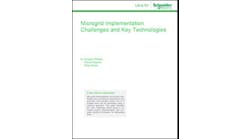By Elisa Wood
September 2, 2010
If you live in Connecticut, California, Maryland, Massachusetts, Pennsylvania, New York, Texas, North Carolina, New Jersey or Ohio your state is doing something right – a lot right – when it comes to energy efficiency.
The ten states deserve kudos, in that order, for policies that encourage energy efficiency, according to a report issued this week by the Center for American Progress and Energy Resource Management Corp.
If other states achieve similar market dynamics, the US construction industry may pull out of its current slump, says the report, “Efficiency Works: Creating Good Jobs and New Markets through Energy Efficiency.”
The US could add 625,000 full-time sustained jobs over the next decade if it retrofits 40 percent of the nation’s homes and commercial buildings, according to the report. Such an effort would bring $500 billion in new investments to upgrade 50 million homes and office buildings and generate as much as $64 billion a year in cost savings for U.S. electric ratepayers.
Why is this especially important now? Because the economic downturn cost more than one in three construction workers their jobs, leaving unemployment in the industry “at Depression-era levels,” the report said.
“To confront this crisis, the U.S. jobs market needs sustained new demand for the skills of construction workers that is grounded in providing real value to the economy through enhanced productivity, greater efficiency, and improved asset value for real estate,” said the report. “Such a solution is readily available. Our country needs a national program to retrofit America’s homes, offices, and factories for energy efficiency—a program that can provide an important answer to the jobs crisis facing our country.”
As is often the case with US energy policy, it is states, not the federal government, leading the way in fostering energy efficiency markets. The report identifies ten strategies employed by top states. They are:
- Energy efficiency measures in Renewable Portfolio Standards—policies that not only require utility companies to meet a set portion of demand from renewable energy but also include energy efficiency as a qualifying form of clean energy.
- Energy efficiency measures in Renewable Energy Credits—policies that establish markets for tradable clean energy credits and include energy efficiency as a qualifying clean energy resource.
- Energy efficiency specific standards that require utilities to plan for meeting a percentage of future growth in demand through energy efficiency instead of increasing supply. These policy tools include Energy Efficiency Resource Standards and Energy Efficiency Portfolio Standards.
- Unbundled utility structures in which energy transmission and distribution utilities are separate from power generation companies that own power plants, encouraging least costs strategies for meeting energy demand through conservation.
- Decoupled utility rate structures, where utilities’ rates are adjusted to compensate for changes in the volume of energy sold, removing the structural disincentive to conserve energy.
- Aligning efficiency with utility companies’ shareholder benefits, such as bonus rates of return, reimbursing program costs, or other incentives that help transform efficiency from a special program into a core business practice.
- Penalties for noncompliance with energy efficiency standards, to ensure that well-intentioned programs are effectively implemented, monitored, and improved upon over time. Effective policies must have real consequences.
- Regulatory cost-benefit tests that focus on utilities’ real costs, in order to isolate the specific value offered by energy efficiency investments.
- Property-assessed financing structures that link the benefits of installed efficiency to a building, rather than the owner of the building, allowing repayment of financed investments to transfer automatically to new owners.
- Service assessment delivery structures, which allow government jurisdictions to directly facilitate financing of upfront capital costs, assuring repayment through municipal or other service assessment mechanisms.
The top states do not use all of these measures, but they have “developed important pieces of the puzzle,” the report said. Still others are moving in the right direction, among them Virginia, Hawaii, Michigan, Maine, Nevada, Delaware, New Mexico, Florida, Illinois and Utah.
For more details see the full report at http://www.americanprogress.org/issues/2010/08/good_jobs_new_markets.html.
Elisa Wood is co-author of “Energy Efficiency Incentives for Businesses 2010: Eastern States,” http://www.realwriters.net/rew/rtlnkpr.htm





